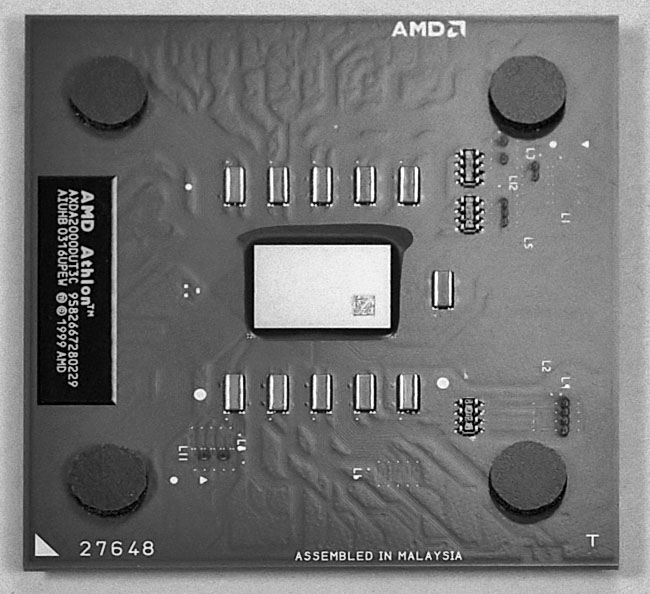 |
|
 |
How to Build Your Own PC - Save A Buck And Learn A Lot 9 Chapter 2: Component Overview |
|
CPU
Figure 16 shows an AMD Athlon 2000+ XP processor. AMD processors are solid and slightly less expensive alternatives to Intel Pentiums. Either an Intel or an AMD CPU is a great choice.
|
Notice the plus sign (+) after the 2000 for the AMD. This means that the AMD processor clock speed isn’t actually 2 GHz (Giga Hertz). Rather, the effective speed of the AMD is comparable to a 2 GHz Pentium 4. The actual clock speed of the AMD Athlon 2000+ is 1.67 GHz. However, the Athlon is more efficient in that each clock cycle processes more instructions. This makes an Athlon running at an actual clock speed of 1.67 GHz comparable to a Pentium running at 2 GHz as far as getting things done goes.
CPUs are designed to fit into their socket in the mainboard in only one way. For example, with the Athlon, two sides have triangle corners, where the pins at the corner of the CPU end in a triangular formation rather than a square (i.e., the pin in the corner is missing for two corners). Thus, when you put the CPU in its socket, it will sit there naturally if placed in the proper orientation. But, it won’t fit in at all if the orientation isn’t right. There is also a small triangle drawing on the CPU to show the proper orientation.
The two most common CPUs for today’s builders are the AMD Athlon XP (Socket A) and the Intel Pentium 4 Socket 478 CPU. I’d recommend using one of these CPUs and certainly nothing older.
|
Home - Table Of Contents - Contact Us
How to Build Your Own PC (/byop/) on PCGuide.com
Version 1.0 - Version Date: May 4, 2005
Adapted with permission from a work created by Charlie Palmer.
PCGuide.com Version © Copyright 2005 Charles M. Kozierok. All Rights Reserved.
Not responsible for any loss resulting from the use of this site.





